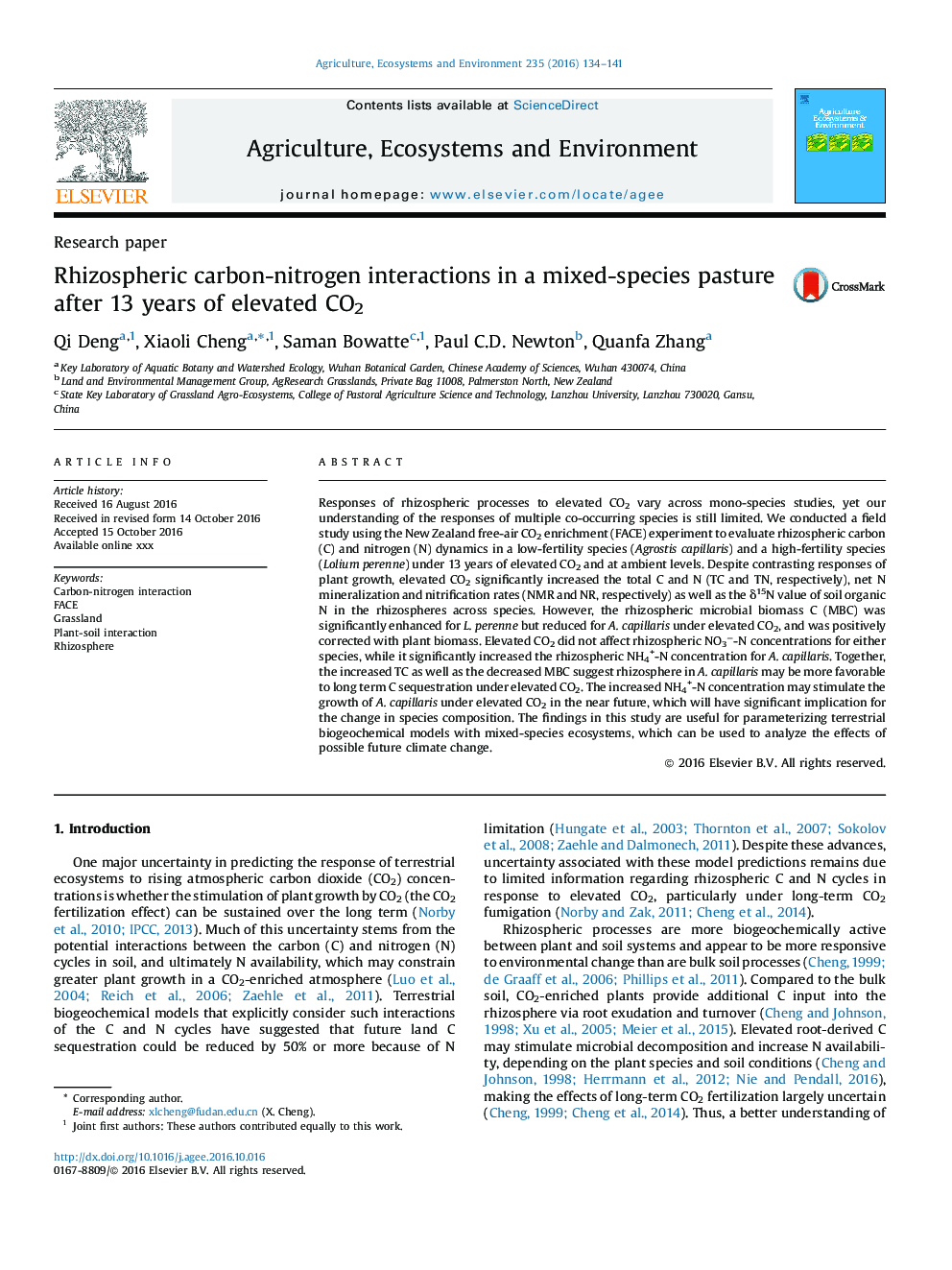| Article ID | Journal | Published Year | Pages | File Type |
|---|---|---|---|---|
| 5538076 | Agriculture, Ecosystems & Environment | 2016 | 8 Pages |
Abstract
Responses of rhizospheric processes to elevated CO2 vary across mono-species studies, yet our understanding of the responses of multiple co-occurring species is still limited. We conducted a field study using the New Zealand free-air CO2 enrichment (FACE) experiment to evaluate rhizospheric carbon (C) and nitrogen (N) dynamics in a low-fertility species (Agrostis capillaris) and a high-fertility species (Lolium perenne) under 13 years of elevated CO2 and at ambient levels. Despite contrasting responses of plant growth, elevated CO2 significantly increased the total C and N (TC and TN, respectively), net N mineralization and nitrification rates (NMR and NR, respectively) as well as the δ15N value of soil organic N in the rhizospheres across species. However, the rhizospheric microbial biomass C (MBC) was significantly enhanced for L. perenne but reduced for A. capillaris under elevated CO2, and was positively corrected with plant biomass. Elevated CO2 did not affect rhizospheric NO3â-N concentrations for either species, while it significantly increased the rhizospheric NH4+-N concentration for A. capillaris. Together, the increased TC as well as the decreased MBC suggest rhizosphere in A. capillaris may be more favorable to long term C sequestration under elevated CO2. The increased NH4+-N concentration may stimulate the growth of A. capillaris under elevated CO2 in the near future, which will have significant implication for the change in species composition. The findings in this study are useful for parameterizing terrestrial biogeochemical models with mixed-species ecosystems, which can be used to analyze the effects of possible future climate change.
Related Topics
Life Sciences
Agricultural and Biological Sciences
Agronomy and Crop Science
Authors
Qi Deng, Xiaoli Cheng, Saman Bowatte, Paul C.D. Newton, Quanfa Zhang,
